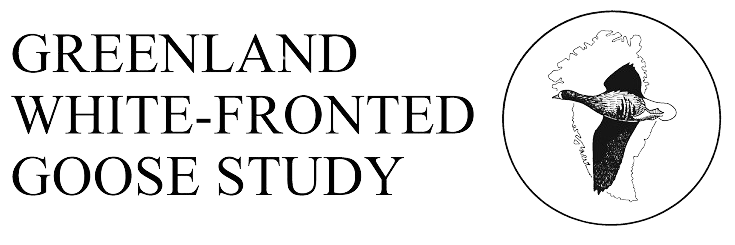History
Not mentioned as a resort by Berry (1939), A-W (1963) nor R&O (1979). The late Major Lennox Hunter first noted a flock of geese grazing on the grass fields at Badachro Farm in March 1963. Closer inspection found them to be Greenland Whit-fronted Geese, numbering c.20 in all. They appeared daily sometime at Badachro, or on nearby Loch Bad na h-Achlais or amongst the peat cuttings of the area. The hunters also saw the geese at nearby Red Point, some 7 km to the south-west (GWGS 1986a). In subsequent years, the geese were also noted, although the Major’s detailed observations, logged in a diary, sadly lost in 1980, are not available. The Major did recall that he rarely saw them at the Badachro site before February, and recalled “If lucky, one could see the geese flying in from Longa Island to Red Point, presumably to graze. It is an area of short grass, heather and small lochans. Unfortunately…(in around 1974)…the Estate decided to do an open drainage system and lime the ground, with a view to improving the grazing for an augmented flock of sheep” (GWGS 1986a). This land use change seemed to coincide with the decline of the geese, and despite the Major’s interest in these birds, there were no further sightings of these birds before his death in 1983. Then, in July 1985, signs of goose feeding were found in the huge expanse of peatlands 15-20 km north of the Badachro area and the vicinity was searched in October 1985. Extensive uprooted cotton grass proved a large flock to be present and 110 were flushed and flew to the north-east, and later estimations suggested a total of 130 geese scattered in small groups over the extensive area of mire and patterned bogs. The geese were not present in December, although only half of the valley was visited, nor were birds seen again in April. Several subsequent visits have found signs of goose feeding, but no geese, although the area is incredibly remote difficult to access and not regularly visited by many humans, let alone ornithologists! In conclusion, it seem fair to conclude that this was certainly in the 1960s and 1970s a regular wintering site for a small flock of maybe 20-30 birds that probably used the bogs and moved onto croftlands and grazing in the late winter. We suspect that the entire area was however used by a much greater number of birds using the bogs and peatlands as autumn and early winter feeding areas, most likely moving to other areas for the majority of the winter, although its precise status remains totally obscure. We know almost nothing about this flock, its abundance feeding range and roost sites.
Status
Unknown, but presently the Badachro site is abandoned, and we do not know enough about the peatlands to be sure what has happened in the Loch Sguod area. Perhaps this was never a regular site, but it certainly formerly held numbers of regional importance. Surveys found no birds present in 1985/6, 1986/7, but 14 were present in autumn 1987, with none again the following year. The flock used the remote patterned mire systems around Loch Sguod, but also resorted to the undisturbed in-bye fields of Longa Island. Quite how many birds used the sites, and whether they were present all winter is impossible to judge. Recent sightings in the late 1980s seem to relate to relatively small numbers of birds staging in autumn, rather than constituting a regular wintering site. The Loch na Moine area of Sutherland has also been used by staging geese (GWGS 1986b), and it may be that Whitefronts use a large number of mire systems undetected in autumn and spring on migration, possibly throughout north and west Scotland.
Site safeguard: None.
Feeding sites and habitat: The extensive raised and blanket mire systems of the area were used by the geese, which were also reported to have fed in rough and improved pasture and in-bye fields in the general area.
Roosting sites: Not known.
Site safeguards or disturbance refuge: None.
SNH Natural Heritage Zones/Area: North West Seaboard.
References
Greenland White-fronted Goose Study (1986a) The Gairloch Whitefronts of Wester Ross. pp.5 In: GWGS Research Report No.5. Greenland White-fronted Geese in Britain 1985/86. GWGS, Aberystwyth.
Greenland White-fronted Goose Study (1986b) A new Whitefront site in Sutherland. pp.4 In: GWGS Research Report No.5. Greenland White-fronted Geese in Britain 1985/86. GWGS, Aberystwyth.
